Just like the regular smartwatch, the rugged smartwatch has evolved from the traditional wearable (that could have been mechanical or with a battery, as well waterproof / water-resistant) in order to become a device more suitable for this century.
While I won’t deny the usefulness of all the integrated technologies (fitness trackers, heart-rate monitors, integration with the IoT, pairing with a smartphone and more), there are some shortcomings that still plague all the smart wearable devices: the battery life has gone from years (or indefinite for mechanical watches) to days and even hours. But that’s something that we must accept as there isn’t yet a solution available in sight (the TicWatch may be onto something and the Amazfit T-Rex has broken some boundaries as well).
The concept of a smart watch is not really new, as engineers have tried many times, for many years, to strap a mini-computer to your wrist, but, the breakthrough into the consumer market came shyly with the Pebble series and it went into the mainstream with the emergence of the Apple Watch, Samsung Gear and Motorola 360 (along with the implementation of the Android Wear as a general OS for non-iOS smartwatches – some other third-party operating systems have also been developed afterwards).
In 2023, smartwatches don’t need an introduction since there’s a fairly large number of devices already flooding the market, but the focus of this article will be for the most rugged smartwatches which will survive a harsher environment and all the punishment that comes from practicing outdoor sports and activities. So, without further ado, let’s see which are the best waterproof smartwatches (which can withstand a beating) on the market right now.
UPDATE 02.12.2023: I have added the TicWatch Pro 5 to the best rugged waterproof smart watches list.
ALSO CHECK OUT: Samsung Gear S3 Frontier vs Apple Watch 3
| Garmin Fenix 6 | Casio WSD-F30 | Amazfit T-Rex 2 | TicWatch Pro 5 |
 |
 |
 |
 |
| Read More | Read More | Read More | Read More |
 |
 |
 |
| Amazfit T-Rex Pro | Samsung Galaxy Watch3 | Kospet Tank T1 |
 |
 |
 |
| Read More | Read More | Read More |
 |
 |
1. Garmin Fenix 6
For a long time, the Garmin smartwatches have been regarded as among the best sports tracking rugged devices on the market and, a month ago (August 2019), Garmin has launched its new Fenix 6 series which comes with some major improvements over the Fenix 5 rugged smartwatches, making no compromises and it shows in the price tag. It’s true that the Garmin products have always been intimidating cost-wise, but the Fenix smartwatches do offer a premium build, solid tracking capabilities, lots of sensors and if you opt for the Sapphire variant, you get an all-round rugged device which you will not be afraid to take along on your outdoor adventures.
The latest Fenix 6 has kept everything that made last year’s Fenix 5 Plus a fantastic smartwatch, including a plethora of sensors (such as the HRM, GPS+GLONASS+GALILEO, sleep and stress tracking and contactless payment), the ability to track a large variety of sports and a rugged body, but it has made available more types of lens (including solar Power Glass) and there is an increased variety of materials for the case (there are also more sizes), but the most significant changes are in the battery life department (significantly improved GPS mode), as well as in the number of features directed towards a better sports tracking experience.
In terms of design, the Fenix 6 and the 5 Plus share a similar look, both featuring a relatively large main body made of fiber-reinforced polymer and with a metal cover, while the bezel is stainless steel (or titanium and the Fenix 6 offers an additional option: diamond-like carbon coated titanium). But, when put next to its predecessor, you will immediately notice that the inner (black) bezel is a lot thinner, allowing for more screen real-estate (the bezel gradations are also gone); the front screws are also better integrated with the look of the rugged smartwatch and overall, the device feels more aesthetically pleasing.
The outer metallic bezel is elevated above the display and it provides a reliable barrier in case you hit the watch on a flat surface, otherwise, you would have to rely on the screen protection, which can be glass (Garmin has decided to use Gorilla Glass 3 instead of the domed chemically strengthened glass), sapphire (which handles scratches a lot better, but makes the device more expensive) or Power Glass solar lens (which has the role of charging the battery of the rugged smartwatch when there is a lot of sunlight – you should not use a screen protector since it can reduce the solar intensity and the lens are scratch-resistant).
Note: Be aware that only the Pro and Sapphire variants of the Garmin 6 support Music, Maps and WiFi, while the 6 and 6S versions are limited to only the Bluetooth connectivity and lack any WiFi capabilities.
I recently took a look at Casio WSD-F30 and it was a behemoth even when compared to the beefier Fenix 3 (which measured 2.0 x 2.0 x 0.6 inches), so the Fenix 6, while still quite large, it will look better on the wrist, being slightly smaller (the 47mm variant measures 1.85 x 1.85 x 0.57 inches, but the 51mm 6X is only a bit larger, measuring 2.0 x 2.0 x 0.58 inches). By default, the Fenix 6 comes with a silicone strap, which is both durable and comfortable and, if you don’t find it elegant, the fixing mechanism is easy to operate, allowing you to quickly change the straps (you can choose between silicone, leather, titanium and nylon).
Garmin has placed three buttons on the left side: Light – can be used to turn on the device, view the controls menu and turn the backlight on/off; Up-Menu – press to scroll up through the widget loop and menus or hold to view the menu; Down – press to scroll down through menus and the widget. There are also two buttons on the right side, one for Activity/Enter (upper arrow icon) – select an option from a menu or start/stop an activity and view the activity list – while the other is for the Back/Lap – press it to return to a previous window / record a lap, rest or transition during an activity or hold it to view the watch face from any screen.
In terms of sensors, the Garmin Fenix 6 doesn’t lack any important ones, being equipped with a Compass, an Accelerometer, a Thermometer (which can be a bit inaccurate because of the body temperature), a Gyroscope, a Barometric Altimeter, a built-in Elevate optical heart-rate sensor (the rugged smartwatch can also be paired with ANT+ and Bluetooth HR sensors), GPS / GLONASS and Galileo Satellite Navigation (GNSS), as well as Pulse Oximeter with Acclimation which has the role of detecting the saturation of oxygen in your blood, therefore showing you how well your body is acclimating to higher altitudes. The heart-rate sensor is surprisingly accurate, but, this type of sensor is not really the best with high intensity training, so it is advisable to pair it with a chest strap for more accurate measurements (you may need to wait for a few minutes until you get accurate readings, though).
Garmin has done a good job waterproofing the Fenix 6 which is water resistant to 10 ATM, which means that it can be submerged under water down to more than 300 feet, but, unfortunately, it does not have any shock / temperature / humidity resistance rating (that does not mean that it won’t survive short falls or the occasional bumps and scratches that can happen while performing any outdoor activities).
On the front, the Fenix 6 features a 1.3-inch LCD Chroma display (the Pro and Sapphire version offer a larger 1.4-inch display), with a resolution of 260 x 260 pixels and a pixel density of 283 ppi (which is an improvement over what the 5X Plus had to offer). It’s worth noting that no smartwatch from the Fenix 6 series has a touch-screen display and the only way to operate your Garmin smartwatch is by using the buttons – I hoped that Garmin liked Apple’s approach, where the true, significant upgrade comes every two years, but it doesn’t seem like Garmin has any intention of using a touchscreen display anytime soon.
Still, some would argue that a touch-screen would drain the battery life faster and that an athlete may find it annoying to operate a touch-enabled display, but, while these points are reasonably valid, considering that this is a premium device, this omission can be a deal-breaker for some. The screen is always on, but, to come easier on the battery, it has a transflective layer which has the role of brightening the display while using it outside, but, indoors, the screen can look quite dim (you can manually activate the back-light). The low-resolution of the Garmin Fenix 5 Plus was one of its main weaknesses and, while Garmin has improved the display for the Fenix 6 rugged smartwatch, it still can do better, especially since there are some great screens from Apple and Samsung (but that’s the sacrifice needed to be done to gain better battery life – similarly to how Pebble handled things).
Similarly to the Fenix 5 Plus, the Garmin Fenix 6 did not go the Android Wear route and it uses its own proprietary software. The UI offers the ability to track almost any outdoor activity, such as Trail Run, Run, Triathlon (gives you scores, it monitors your heart rate, it tells you if you’ve been improving your fitness level, it shows maps of the area you ran and so on), cycling, swimming (the smartwatch can’t record your heart rate while swimming; it can automatically record swim intervals and lengths), kayaking, skiing (detailed stats of your skiing course, including the time and speed it took you to finish it), climbing, stair stepper, cardio, golf (keeps scores, it gives you detailed hole information and other overall statistics) and a lot more.
Every data collected by the sensors can be accessed from the Garmin Connect app, which gives an user-friendly way of viewing summaries or detailed info about your activities (the data is collected via WiFi in the case of the Pro models or via the Garmin Connect Mobile app when you are connected to your phone – compatible with both iOS or Android OS). You can also create schedules for your workout (it can be as structured as you want), so you can more easily follow a plan.
Besides the larger amount of activities that are being tracked by Garmin, other novelty elements are the redesigned widgets (which make it easier to track activities), there are new map display themes, the switch from the MediaTek GPS chip to the better Sony GPS chip, there is now more storage available (32 or 64GB, so you can store a lot more songs and listen to them using Bluetooth headphones) and the manufacturer has made significant improvements on the battery life.
The battery life was one of the best features of the rugged smartwatch, because, if you disabled the GPS and the heart-rate monitor and used the device only as a watch, you could get up to 2 weeks on a single charge (with the GPS on, you would get up to 24 hours and if used in UltraTrac mode (it accesses the satellite once a minute), the battery would deplete in about 60 hours). The Garmin Fenix 6’s battery life is even better, offering up to 36 hours on the GPS mode, 72 hours in Max Battery GPS mode and up to 2 weeks on use in smartwatch mode (no GPS); additionally, there is the Expedition GPS Activity mode which can offer up to 28 days of battery life and the Battery Save Watch Mode for getting more than a month of battery life (up to 48 days).
2. Casio WSD-F30 Rugged Smartwatch
As the name suggests, the Casio WSD-F30 is the third attempt from Casio to create a smartwatch which accomplishes the perfect balance between toughness and functionality, therefore being both suitable for outdoor sports and being able to offer a great user-experience (mostly, in terms of software).
While the first WSD-F10 was a rather unique smartwatch, retaining both the classical look and the toughness of the digital G-Shock series (along with new smart technologies), the direct predecessor of the WDS-F30, the Casio WSD-F20, didn’t bring that much to the table, although some key improvements have been made to render it a better device (such as a more appealing design, the implementation of a GPS and more). At first glance, the Casio WSD-F30 doesn’t seem to have made significant upgrades as well, but, on a closer look, you can see that the body of the rugged smartwatch is now slimmer and smaller, the display is improved and it comes with all the new features of the latest Wear OS.
The Casio G-Shock watches were characteristically larger and thicker than the average watch and the WSD-F20 preferred to keep the same dimensions, therefore shocking its potential users when they came face to face with the 2.42 x 2.22 x 0.61 inches smartwatch. Fortunately, the WDS-F30 has suffered some reductions, now measuring 2.38 x 2.11 x 0.58 which, may not seem that much, but you’ll definitely feel the difference on your wrist (the reduced weight also helps a bit, as it has gone from the 3.24 ounces of the WSD-F20 to 2.93 ounces).
As you can see, it is significantly heavier and larger than the Apple Watch 4 (while not really adding more screen real estate), but the size of the Casio WSD-F03 is justified because it’s there to provide a superior protection, especially while practicing outdoor sports or other similar types of activities.
I can see that Casio retained the design line of the previous generation, still featuring two sets of large plastic bezels, with the outer one reminding you that it is part of the ProTrek series and revealing the location of each button and sensors; the bezels are elevated and have the role of protecting the screen in case you accidentally hit it on a flat surface, otherwise, you’ll have to rely on the scratch-resistant screen glass. Unlike the WDS-F20, where the protruding bezels were exposing some screws which kept everything together, the WDS-F30 has removed them, so the smartwatch looks a bit more elegant and less industrial (don’t worry, it still kept the feeling that you’re dealing with a tough, rugged smartwatch).
The metallic buttons are conveniently placed on the right side (Tool, Power ad App), while on the left side, there’s the Charging Terminal (the cable is backwards compatible with the previous two Casio smartwatches) and the Pressure sensor. On the front, on the inner bezel, there’s a small Charge LED light and, towards the bottom, there’s a water-resistant microphone (up to five atmospheres), which is useful for taking advantage of the Google Assistant.
The whole smartwatch is waterproof, so it can be submerged underwater down to 164 feet (obviously, the touchscreen will not work while submerged and I would suggest against wearing it in high humidity / high temperature environments) and it is MIL-STD-810G rated, therefore, similarly to the WDS-F20 it survived the transit drop and general vibration tests, it can withstand a moderate level of humidity, solar radiation and it should also be resistant to multi-cycle shocks from constant extreme temperatures or icing/freezing rain (and more).
Furthermore, the back of the smartwatch is a simple brushed metal fixed with visible screws and, while I have no complaints about the longevity of the plastic strap, it does feel quite rigid and I had a hard time detaching it (so, it’s not easy to swap between different straps – besides adding more holes to the strap, the rigidity is an element that hasn’t really been improved from the previous model). In terms of sensors, the Casio WSD-F30 is equipped with a magnetic sensor for direction, a pressure sensor, an accelerometer, a gyrometer and a low-powered GPS (it also is compatible with GLONASS and Michibiki) – unfortunately, Casio decided against adding a Heart rate sensor, which is inexplicable, since you can find it on less costlier smartwatches.
You can use the aforementioned Tool button to swap between the info given by each sensor, which includes a tide graph (useful for fishing, but not recommended for navigation purposes – use the official charts for that), the compass measurements, sunrise and sunset, the altitude, a coloured map of your location, an activity graph and more.
On the front, the main attraction is the 1.2-inch OLED display with a resolution of 390 x 390 pixels and a pixel density of 459 ppi (while the display is smaller, it is a lot better than what the WSD-F20 had to offer). Furthermore, there are actually two displays, with the OLED one positioned underneath a semi-transparent low-power monochrome LCD display that becomes active during the Multi Timepiece mode (which besides simply displays the time, it also offers additional sensor info – a useful feature for people that dislike having the display turned off most of the time, but taking on the battery life – in this mode, the rugged smartwatch can go up to a month on a single charge).
Overall, WSD-F30’s display is greatly improved, but it’s still not really the best I’ve seen on a smartwatch, lacking a bit in terms of brightness (something really annoying especially while travelling), but it was reasonably vibrant and colourful.
The WSD-F30 uses the Android Wear 2.10 OS and some of the main applications are the Activity app (useful for tracking the current progress of your usual activities, such as fishing, trekking, cycling, paddling or snow activities), the Casio Watch Faces (choose between Location, Traveller, (updated) 2 Layers, Authentic, World Time, Place, Journey, Multi or Frontier), the ViewRanger App (great for mountain-climbing or trekking), BikeMap, Equilab, MyRadar, Location Memory and more.
Pairing the smartwatch to an Android phone is done really fast and it opens up a whole new set of features (such as answering a call, getting notifications, listening to locally stored music and more). The WSD-F30 will pair with an iPhone, but the features are a lot more limited.
Note: Inside the case, the smartwatch is equipped with a Snapdragon 2100 processor, 512 MB LPDDR3 SDRAM and 4 GB internal storage (it also equipped with the low-energy Bluetooth V4.1 tech and the WiFi 802.11 b/g/n).
The one major weakness of the Casio WSD-F10 was the battery life, which would barely reach a day with very light use. Unfortunately, the Casio made no real progress with the WSD-F20 and while the WSD-F30 also made no significant advancements, it does come with some battery saving modes which could push the battery life from 3 days (the Extended Mode) up to 1 month. One complaint that I had about the WSD-F30 is the charge magnet, which was very weak and difficult to be kept attached to the smartwatch and, to improve things on the Casio WSD-F30, you can add a clip to keep things tighter.
3. Amazfit T-Rex 2

The Amazfit T-Rex 2 is the successor to the T-Rex Pro which is a proven properly rugged smartwatch that still goes strong even after years of abuse. And honestly, this is the reason why both rugged smartwatches are a part of this list, Amazfit has managed to build two rugged smartwatches that are more than capable of withstanding harsh conditions. Of course, being the newer device, there are some improvements in a few key areas, including the look, the screen and the software.
The T-Rex Pro was made of plastic and that’s also the case with the T-Rex 2, but the good news is that you’ll hardly be able to tell. The rugged smartwatch does measure 1.85 x 1.85 x 0.51 inches, so it’s not a small device by any means, but it’s also not very heavy, weighing only 2.3oz (due to the plastic build). There are some design choices that I am not fond of, such as the decision to plaster the logos all around the case and I am fairly sure that this smartwatch won’t look that great on a formal wear.
But, the construction and industrial workers will not care that much about the looks and will want to know if this smartwatch can survive harsh conditions. The Amazfit T-Rex 2 is MIL-STD-810G certified which means that the smartwatch has passed some tests, so it’s fairly shockproof.

But, if it’s built in the same manner as the T-Rex Pro, then the case will survive just about anything. What about the display? Amazfit did make it a bit bigger, although not by much and, unfortunately, they did not go with Gorilla Glass or Shappire, so the only thing that protects it is the raised lip within the bezel. One interesting aspects that a lot of manufacturers of rugged smartwatches should take note is the use of a touchscreen display, while also allowing full control using only the side buttons.
There’s the UP and Down buttons on the left, and the Select and Back buttons on the right. All these combined will allow you to operate the smartwatch when using gloves. Now let’s talk a bit about the water resistance of the watch. The smart watch prides itself with a 10 ATM water-protection, so it’s fairly waterproof and considering that it will survive at 10 ATM, you should be able to submerge the T-Rex 2 underwater down to 300 feet.
Even so, I wouldn’t really trade it for a professional device that can actually withstand deep dives. What I didn’t see is any IP68 rating, but, considering the water proofing of the case, I assume that the rugged smartwatch is also dust-resistant. In terms of sensors, the Amazfit T-Rex 2 comes with a Barometer, a Gyroscope, a Geometric sensor, an Accelerometer, an Ambient light sensor and one of the most interesting additions is the Dual-frequency band along with the 6 satellite positioning which should ensure that your outdoors activities are properly tracked.

Furthermore, the Amazfit T-Rex 2 includes a Heart rate monitor which is used for producing fairly accurate PAI measurements. On the front of the rugged smartwatch, the manufacturer has bumped the size of the AMOLED display to 1.39 inches, the resolution also seeing an increase to 454 x 454 pixels (and a pixel density of 326ppi). By default, the display is set to adaptive brightness which is more than enough when indoors and it will be more gentle on the battery.
At peak brightness, you will be able to see the info on the display even if it’s very sunny outdoors. As expected, there is no always-on display mode and so far, only TicWatch seems to have been able to achieve something close to the ideal AoD. The T-Rex 2 does not use Android Wear OS and instead it relies on a proprietary software called Zepp OS. If you ever had one of those inexpensive smartwatches, you’ll recognize the layout and yes, there are no third-party apps unfortunately.
At the same time, you do get a very responsive OS with smooth transitions between the windows even if the hardware is not inherently that powerful. You do get a Sleep tracking app, the aforementioned PAI which in my opinion is far superior to the step-counting system. And then there’s the suite of workout tracking apps which cover pretty much all types of sports.

As for accuracy, I mostly focused on the strength training and it was decent, way better than a lot of other smartwatches in the same price range and below. But it did sometimes had issue with quick rising and lowering heart rates (characteristic for weight lifting). Besides that, you do get to change the watch faces, get notifications, use the music player and more. In terms of connectivity, the Mission SS supports Bluetooth 5.0 technology (Bluetooth Low Energy) and there is no way to connect it to a local network – no support for WiFi.
The lack of a microphone and a speaker also erases the possibility to answer calls from the smartwatch without having to use the phone. The battery life is really good due to the 500mAh built-in battery and it will manage to deliver about two weeks on normal use including running 3-4 workout sessions a week. To charge the Amazfit T-Rex 2, you have to use the magnetic charger that has a strong magnet (so it attaches firmly to the back of the smart watch). It’s proprietary and it doesn’t seem to be compatible with the T-Rex Pro which is lovely (yay for e-waste!).
4. TicWatch Pro 5

The original TicWatch Pro was built as a means to breathe some life back into the Wear OS ecosystem and for a 2018 rugged smartwatch, it had a tough exterior, while also keeping a premium look, the dual-layer display was an interesting way to deliver more battery life, so all the basics were covered and some more, but it was missing a bit in the performance department. Three generations later, the TicWatch Pro 5 is a more refined rugged smartwatch in terms of design and it does rely on the Snapdragon® W5+ Gen 1 platform to handle the Wear OS 3.5.
This operating system was in dire need of an upgrade from Google which has neglected this platform for years, but it seems that the developers are once again working on creating a perfect integration between Android phones and Wear OS. The dual-display is still a very much important feature, although as you will see, it doesn’t have as much positive impact on the battery life as before.
Design-wise, The TicWatch Pro 5 sports a 7000-serie aluminum and high-strength nylon with fiberglass case, the top bezel being slightly elevated over the display. This way, the rugged smartwatch can ensure some degree of protection against mechanical shocks.

There is also Gorilla Glass, so the screen is also shatter-proof. On the right side, Mobvoi has added the rotating crown and a button, and there is also a speaker, but it’s on the other side, its openings being on the rear panel. The rugged smartwatch is not small and considering that it’s available in a single size (48mm), you need to make sure that it will look good on your wrist. As for comfort, it’s lightweight and perfectly balanced, so you won’t even tell you have it on your wrist. As for the strap, the days of the leather and silicone combo seem to be gone, being now replaced by a fairly basic-looking silicone band.
I know that a lot of people really liked the rotating bezel of the Galaxy Watch and, while not as satisfying, the rotating crown on the TicWatch Pro 5 will smoothly scroll through any menu, but, unfortunately, you cannot enable any function since this can only be accomplished using the touchscreen. This is bad news for people that work in industrial environments and may prefer some physical controls – come on, Mobvoi, just add the damn function! It’s not that hard. On the rear side of the rugged smartwatch, we can see that the panel is made of plastic, with the heart rate sensor suite sitting in the middle and, on the side, there are four contact points for the charging cable.

They looked about the same size and positioned in the same manner as on the TicWatch Pro 2020, but don’t think that the cables are compatible. God forbid. Besides the screen protection, the TicWatch Pro 5 meets the 810H military specifications and, unlike the Pro 2020, Mobvoi did not mention which specific tests have been passed. Furthermore, while the TicWatch Pro 5 does not have an IP rating, it does seem to be able to handle up to 5 ATM, so it should be safe to swim and even take showers with the rugged smartwatch. It’s as close to waterproof as it gets.
In terms of sensors, the rugged smartwatch features an accelerometer, an HD PPG heart rate sensor, a gyroscope, a skin temperature Sensor, a low latency off-body sensor, a Barometer and a Compass. There’s also NFC for payments only with the watch; if you’re wondering about the connectivity, the TicWatch Pro 2020 supports 802.11 b/g/n WiFi standard and the Bluetooth 5.2. On the front, there’s a 1.43-inch AMOLED display with a resolution of 466 x 466 pixels and it’s actually more than decent (on par with other more expensive solutions), featuring vibrant colors and good brightness levels to ensure that the smartwatch’s display will remain visible in all scenarios.

But a very important element is the secondary monochrome LCD display that sits on top of the AMOLED layer and it activates when you’re no longer using the smartwatch – this way, you get an always-on display while sacrificing almost nothing in terms of battery life. You still do get the traditional always-on mode, so the device can look like a regular watch, but it will have a heavy impact on the battery life. It’s also possible to change the color of the monochrome display, so this is pretty much the only notable improvement from the 2020 version.
The TicWatch Pro 5 uses the Wear OS 3.5 which will work only with Android smartphones, so no love for iOS. And, as I mentioned before, Google has been massively lagging in development, only recently releasing some notable versions, the 3.5 being the more refined one, although the v4.0 is also available. Mobvoi does a decent job at delivering a balanced experience, offering some actually cool watch faces and, besides the default Android experience, the manufacturer has added some proprietary apps such as the TicHealth, TicPulse and the TicExercise.
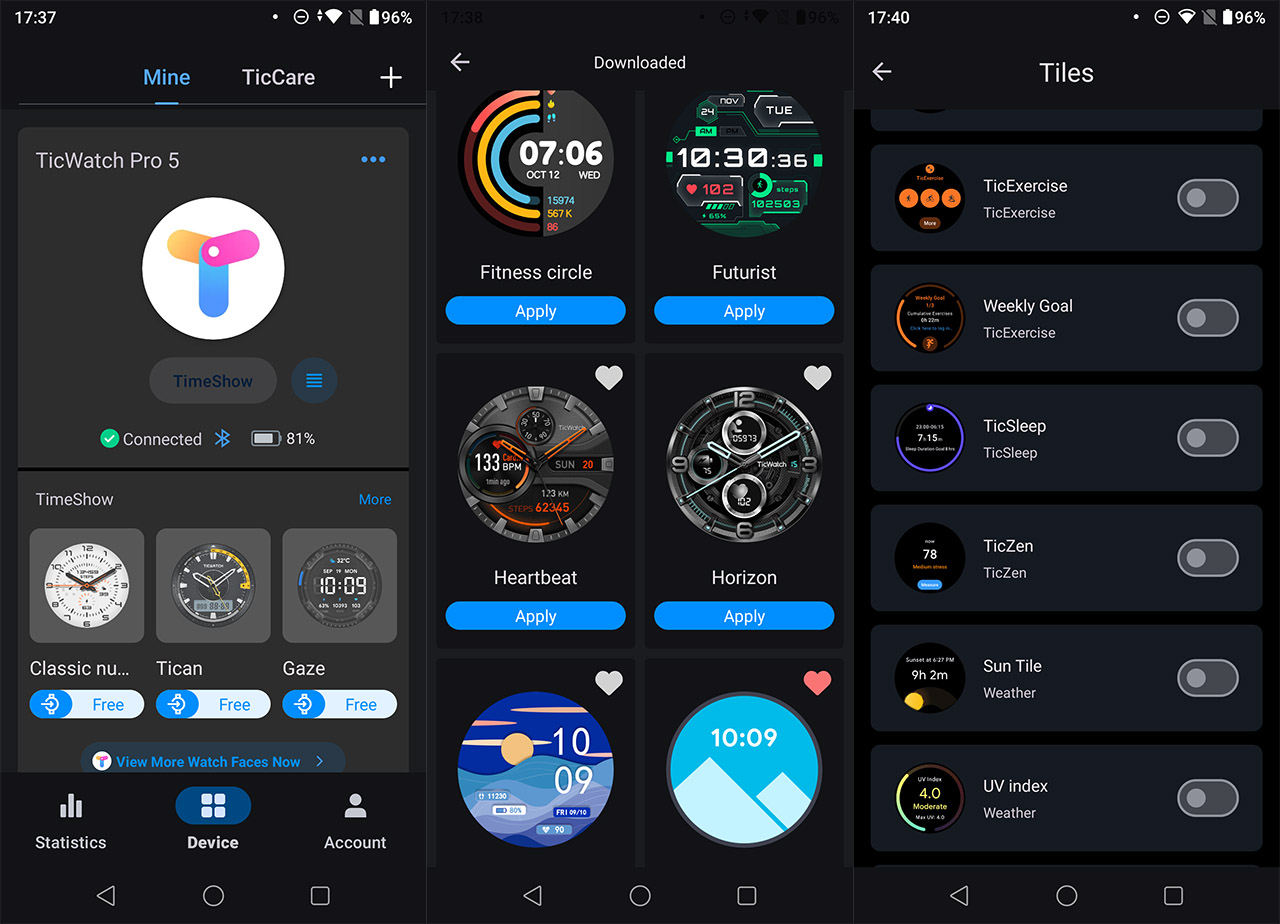
The TicHealth is a replacement to the Google Fit and it counts your step and tracks your exercise, while the TicPulse has the role of monitoring your heart rate for 24 hours and the TicExercise tries to detect the type of physical activity that you’re undergoing, so you don’t have to manually switch between the activity type. There is also an entire suite of third-party apps to choose from using the Play Store. Overall, the interface is reactive and quick, which is expected considering that it is equipped with the Snapdragon W5+ chip and it’s clear that the 2GB of RAM do have a positive effect on the performance of the rugged smartwatch as well.
The TicWatch Pro 5 has a 590 mAh battery which can deliver a bit over 3 days with normal use and will gain quite a bit more if you switch to the Essential mode (only the LCD screen). The problem is that the Galaxy Watch 5 Pro offers a very similar battery life while not relying on the secondary screen at all. So, is the TicWatches Pro 5 able to bring back that Pebble nostalgia? What I loved about the Pebble smartwatch was the battery life, but also that it could deliver some smartwatch functions at the same time, so in this sense, Mobvoi hasn’t really filled that Pebble shaped hole in our hearts, but it has managed to design a decent rugged smartwatch which offers some sport-focused elements (similarly to the other waterproof rugged smartwatches), all that at a fair price tag.
5. Amazfit T-Rex Pro
Amazfit has been busy these last few years and, while it didn’t (yet) try to go against the brands that have been popular for a long time, I noticed that they have been gaining some serious traction in the market. And that’s because they build inexpensive, yet decent smartwatches. I know that this list is filled with expensive rugged smartwatches, so I thought I would add a more budget-friendly option, the Amazfit T-Rex Pro. The interesting thing is that I have been testing this model for well over six months and it has held up perfectly fine – the smartwatch was used by an industrial worker and it has survived some of the worst conditions. So yes, the Military Grade certifications aren’t just for advertising purposes.
After I got it out of the package, I could immediately tell that this is build for people that want their rugged smartwaches to survive, so the design is not really that pretty. What you do get is a Casio-like look, with thick bezels that protrude upwards to help protect the display and we’re not dealing with stainless steel or other types of alloy, this is a smartwatch that’s mainly built out of plastic (polycarbonate). This is not going to give the smartwatch a premium look or feel, but it is going to make it more lightweight which, considering the size of the Amazfit T-Rex Pro, is a very welcomed design choice. Indeed, the smartwatch may measure 1.9 x 1.9 x 0.5 inches, but it does only weigh 2 ounces and, taking into account the silicone wristband, it does make the Amazfit T-Rex perhaps the most comfortable rugged smartwatch on the market.
On the sides, there are four metallic buttons. On the left side, there are the Up and Down buttons which can be used to navigate through menus and other options in the software, but don’t worry, the display is touchscreen, so you can slide your fingers on the screen as well. The buttons do make sense in an industrial environment, where gloves are mandatory, so you can still use the smartwatch without touching the display. On the right side, there’s the Select button and the Back button, both allowing you to again navigate the software without relying on the display. The manufacturer says that the smartwatch is rated as being waterproof up to 10ATM which means that you can down to 330 feet, but I would still go with professional equipment since this is not really suitable for proper diving.
Furthermore, the encasing is designed in a manner as to remain operational in temperatures that go as low as -10F and as high as 150F. There’s also the aforementioned military grade tests and it seems that the rugged smartwatch passed 15 tests which include the 240h humidity resistance, the shock resistance, the 96 hour salt spray resistance and the ice + freezing rain resistance. I haven’t really tested any of these claims, but as I said before, six months after being used by an industrial worker, the Amazfit T-Rex Pro only has a few scratches and nothing more. Within the plastic bezels, rests a 1.35 inch AMOLED display that has a resolution of 360×360 pixels and its battery performance allows for proper Always On Display performance.
And that’s something only a few brands can achieve (including the strange approach of Mobvoi with its TicWatch line). Since we’re dealing with an AMOLED, the colors are vibrant, the blacks are deep, there is a good amount of brightness, so it is better than what we get on far more expensive brands.
To make sure that the display will have a better chance at surviving in a harsh environment, the manufacturer has also added a Gorilla Glass 3 protection. The battery life on the Amazfit T-Rex Pro is nothing short of amazing because in the last months, it required charging every 10-12 days and that’s with the display set on Wake on Tilt. I am not sure how well it will behave in a couple of years – for example, my daily driver, the TicWatch Pro 2020 will now barely go above 24 hours with most of its functions enabled.
For the wide audience, these are pretty much all one would need from a rugged smartphone and truth be told, the software is not that great. It’s not bad per se, it’s just quite basic, but it does work for its intended purposes. There are lots of watche faces to choose from (I am still slightly annoyed by the limited options on the TicWatch), you can check your hear rate (uses the BioTracker 2 PPG biological tracking optical sensor) and the blood-oxygen saturation.
You can also check your notifications, use any of the 14 available workout modes, check your phone location and more. It’s worth mentioning that the rugged smartwatch uses Bluetooth 5.0 (and BLE), so it will connect to both an Android smartphone and an iPhone, but there is no support for a WiFi connection.
6. Samsung Galaxy Watch 3
The Samsung and Apple rivalry has transcended the smartphone market and it entered the smartwatch realm where each manufacturer tried to create the perfect smartwatch suitable for a broader audience. But, while the Apple Watch has effortlessly managed to capture the attention of the public (it almost single handedly put the smartwatch in the mainstream), the other smartwatches (mainly from the Android environment) still have a harder time becoming more relevant in the wearable market. This has also been the case for the Gear series for a while, with Samsung constantly trying to reinvent itself and give its smartwatch line a proper direction. The original Galaxy Watch was already proof that Samsung has gotten more serious and the latest Galaxy Watch seems to be even more refined which made the manufacturer confident that it can surpass Apple Watch’s reign.
While I doubt that’s going to be the case anytime soon, I do have to admit that the Samsung Galaxy Watch 3 is one of the better looking smartwatches on the market, sporting a design very close to the traditional watch, so it will go very well with a formal attire. Of course, some rugged elements are still present (otherwise it wouldn’t have been a part of the best rugged smartwatches list), so it will be suitable for outdoor activities and survive a slightly more harsh working environment. To accomplish this, it has kept the analogue-type watch look and surrounding the display, there’s the watch bezel made of stainless steel which rotates and gives easy access to your data.
Yes, Samsung has brought back the rotating bezel which got skipped with the Galaxy Watch 2 and it’s worth pointing out that the mechanism is even smoother than on the original smartwatch and will give a satisfying feeling while rotating it. But that’s not all because the stainless steel 316L case of the rugged smartwatch is thinner and it has also lost a bit of weight, so it will feel better on your wrist. As before, the rotating bezel sits a bit more elevated from the screen, which gives the watch an increased protection against accidental hits. I would still be careful to not hit the device against sharp objects because the screen is not made of sapphire, but it is protected by Gorilla Glass DX – the same as on the previous two models. Besides the rotating bezel, the Galaxy Watch also has a Back key located on the right side of the smartwatch and, underneath it, there’s a Home/Power button.
Similarly to its predecessors and other smartwatch brands, the Samsung Galaxy Watch 3 is available as two models, one for smaller wrists (41mm) and the other for people with larger wrists (45mm). The 42mm Galaxy Watch seems to be aimed at women considering that it has a ‘larger’ palette of colors available – it includes Rose Gold.
The 45mm variant may initially seem a bit too large or too heavy when compared to the Apple Watch, but, let’s not forget that the Galaxy Watch is an outdoor-type rugged smartwatch and, when compared to the likes of Garmin Fenix 6 or Casio WSD-F30, this rugged smart watch is actually quite average. As expected, the Galaxy Watch 3 is equipped with all the important sensors: an Ambient Light sensor (to properly adjust the display brightness and contrast), A-GPS/Glonass/Beidou/Galileo, a Heart Rate sensor (positioned on the rear side of the smartwatch, where the device touches your wrist), an Accelerometer, a Barometer, a Gyroscope and an Electrical Heart Sensor (ECG).
Samsung still decided to not add a Magnetometer, so no Compass and there’s no Thermometer. At first, the heart rate monitor did not really seem that accurate while jogging, but, I noticed that after I tightened the strap on my wrist, it has greatly improved the accuracy of the readings.
One department that Samsung has made some improvements when it moved to the Galaxy Watch series was on the waterproof department so, similarly to the first model, the Galaxy Watch 3 can be submerged down to 165 feet (5 ATM). Furthermore, besides being waterproof, the Galaxy Watch is also dust-proof (IP68 certified) and it is MIL-STD-810G rated: it has survived 10 specific conditions, which includes low pressure, high altitude, drops from 4.9 feet, vibration and shock and extreme temperatures. Just like its predecessors, the Galaxy Watch comes with either a 20mm or a 22mm strap and it’s made of seemingly genuine leather. Both variants (42 and 45mm) allow the user to change the straps and the mechanism is easy to operate, so swapping them is quick and painless.
On the front, Samsung has equipped the Galaxy Watch with a 1.4-inch Super AMOLED capacitive touch-screen display , but the smaller version comes with a 1.2-inch screen. Both displays feature 16 million colors, have a resolution of 360 x 360 pixels and a pixel density went up to 364 ppi. Although no improvements have been made over the last generation, the display is still very much up to the 2021 standards: it is vibrant, the contrast levels are good, it’s bright enough for sunny days and the blacks are very deep (as expected from an AMOLED). Additionally to the rotating bezel, the touchscreen feels appropriately reactive and fast. The Galaxy Watch 3 allows you to set the display to be always on and, when you’re not looking at the screen, the display slightly dims and it supports a wider range of customization. This feature had a heavy impact on the battery life, so, if the battery life is extremely important to you, you can set the display to turn on only when you raise your wrist (the process is very fast and you won’t notice that the display is off).
Unsurprisingly, Samsung steered clear of the Android Wear and it remained with the proprietary Tizen OS which is now on version 5.5 (a way of competing with both Google and Apple). To navigate the interface, you can use swipe gestures (swipe left to see the notifications, the recently opened apps, view the weather and so on; swipe down to open the status bar, adjust the brightness and volume, open the music player) or the bottom right button (to open the app menu with its circularly arranged icons). If you press and hold the top right button, it will launch the Samsung Pay, which allows the smartwatch to be used as a credit card (supports both NFC and MST – therefore supported by almost all checkout terminals). The Samsung Pay feature will work with some non-Samsung smartphones (minus iPhones) and it can be used with the Galaxy Watch as a standalone (if you don’t have your smartphone with you).
Samsung has worked very hard to push the Tizen OS forward and gather the necessary attention from software developers, so there are far more apps available at the moment than with the first Galaxy Watch, but it seems that the next Galaxy Watch will use the new Google software. In any case, using Tizen OS, you get the Samsung Health (it provides fitness tracking, including new exercise modes for both indoors and outdoors workouts and can accurately enough detect when the user switches the exercise; it can also track your sleeping time decently well), Bixby (a voice assistant – useful to perform calls or send emails) or the SOS function (tap the Home key three times to send an emergency message to your contacts or perform an SOS call). The Galaxy Watch 3 rugged smartwatch will work with both Android smartphones (offers a full range of control, but you need to install the Galaxy Wearable app) and iPhones (also offers a wide range of control, but it is mostly limited by the iOS).
The Galaxy Watch is equipped with the same dual-core 1.15 GHz Exynos 9110 chipset as the first Galaxy Watch, it has 8GB of internal storage and apparently only 1 GB RAM. It’s a bit surprising that Samsung would cut the amount of RAM on the Galaxy Watch 3, even though so far, it didn’t seem to have had much of an impact on the performance of the device. Connectivity-wise, the rugged smartwatch supports WiFi 802.11 b/g/n and Bluetooth 5.0. Furthermore, the Galaxy Watch is also equipped with a non-removable 340-mAh battery, same as its predecessor. It’s clearly not enough to get an excellent battery life and the most you’ll be able to get with an LTE connection and with the always-on screen turned off will be about 2 to 3 days (with moderate use).
7. Kospet Tank T1 Rugged Smartwatch

I have been postponing adding a Kospet rugged smartwatch to this list, but after testing the Tank T1, I think it’s time to take a serious look at how the inexpensive devices are able to hold their ground against the costlier options from the market. I have already added the Amazfit T-Rex which offers a lot of value for the money and the Kospet Tank T1 seems to be in the same league.
I have tested the Kospet Tank M1 a few months ago and, while it was a solid option for the price, the design held it back a lot (seemed a bit cheap) but the manufacturer remedied that when it developed the Tank T1. Indeed, the rugged smartwatch features a metallic bezel which surrounds a circular display and there are two metallic buttons on the right side as well. The rest of the device is made of plastic, but that’s something to be expected considering the price tag of the device.
Even so, you should be able to wear the Kospet Tank T1 with a casual or more formal wear and also take it with you while working out or swimming (it is a waterproof smartwatch after all). At the same time, the device is a bit large (49mm) but, as I mentioned in the full review, it did not look bad on my thin wrist (they may go with a smaller version in the future, as Apple does).

What I didn’t like that much was the strap which is made of silicone and doesn’t really complement the design of the Kospet Tank T1 – you also get a camouflage strap as well. You can change the straps to whatever you like since they use a universal closing mechanism. The two buttons on the side of the rugged smartwatch have a simple purpose, the first one is the Power button and the second is the Return button (which will also enable the Apple Watch-like menu).
On the rear panel, the Kospet Tank T1 has the HR sensor to detect the hear beats per minute, to check the blood pressure (not that accurate though, which was expected), the SP01 (Oxygen level in the blood) and there’s also a pedometer to check for the number of steps that you took. The gyroscope is not that great though because the Tilt-to-Wake function is terrible, requiring for ample movements. And it’s something that I saw with all Kospet smartwatches that I tested so far (the Tank M1 and the Optimus 2).
Since I mentioned that this is a rugged smartwatch, it’s important to know that the device is built to be (seemingly) shockproof. The MIL-STD tests that the manufacturer ran does include dropping the smartwatch from very high and the raised bezels can help if you bump the device into things.

Then, there’s the IP69K rating which means that the Kospet Tank T1 is dustproof and as close to being waterproof as possible. To be more specific, the rugged smartwatch can withstand 5ATM of pressure (meaning that you can submerge it down to 164 feet). Also, it seems that the smartwatch was tested with corrosive substances (5% NaCl) and it did fine, so it will survive in a construction site and in an industrial setting.
The display 1.32-inches and it’s a TFT panel with a 360×360 pixels resolution. It’s a decently bright display with a fair representation of colors. There is a bit of glare, but the black levels are surprisingly deep (the whites are also not yellowish or with a green tint, which is a plus). The display is touchscreen, but the function to wake on double-tap is missing and I am actually missing it, especially since the Tilt-to-Wake is not that great. The software itself is the same lightweight set of tools that you see on most inexpensive devices, so nothing specially tailored for the Kospet smartwatches.
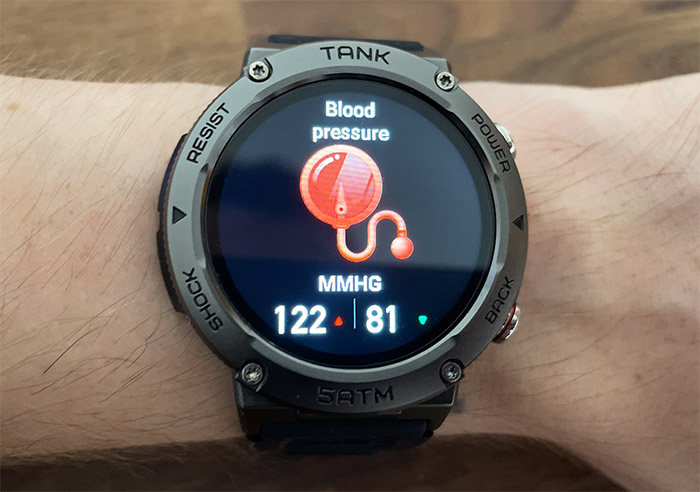
And this is probably the most relevant weakness that both the Tank T1 and the Amazfit T-Rex have because any other brand that I mentioned in this list offers a lot more in terms of fitness tracking – Garmin is actually phenomenal at this. You still do get some fitness tracking with about 20 different modes and there’s also the HR monitoring which is decently accurate when you’re not working out (at that point, it just gives up).
But there is an advantage that this rugged smartwatch has over its competitors that are more expensive. It’s the battery life. While an Apple Watch barely manages to survive a day, a device like the Kospet Tank T1 can last for about 2 weeks. Sure, it doesn’t have all the bells and whistles, but a lot of people don’t need them.
Note: The Kospet Tank T1 uses Bluetooth 5.0 to connect to the smartphone for the dedicated app.

Mark is a graduate in Computer Science, having gathered valuable experience over the years working in IT as a programmer. Mark is also the main tech writer for MBReviews.com, covering not only his passion, the networking devices, but also other cool electronic gadgets that you may find useful for your every day life.


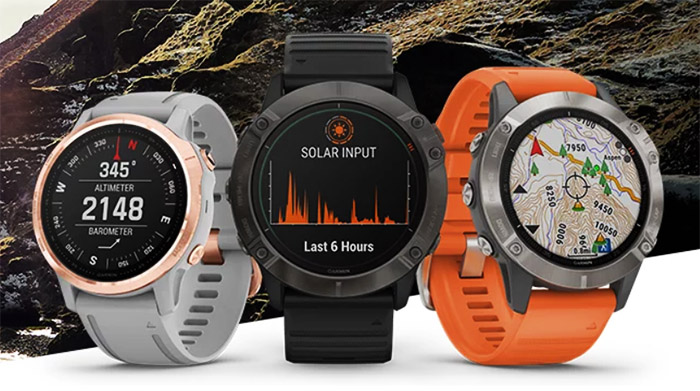
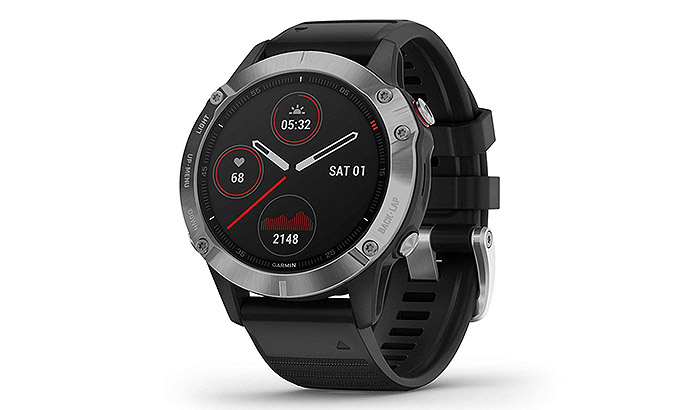

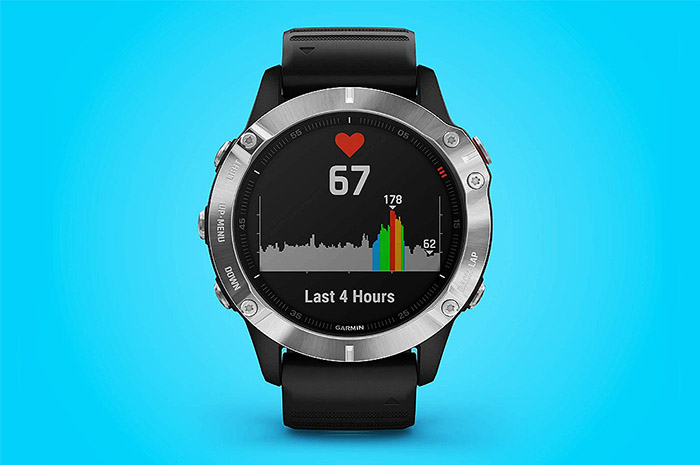

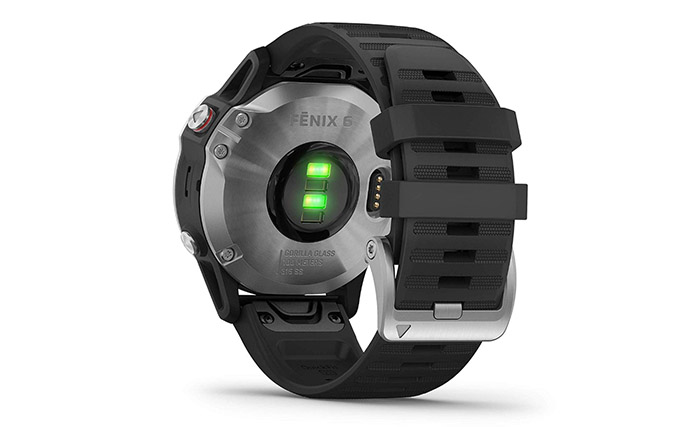

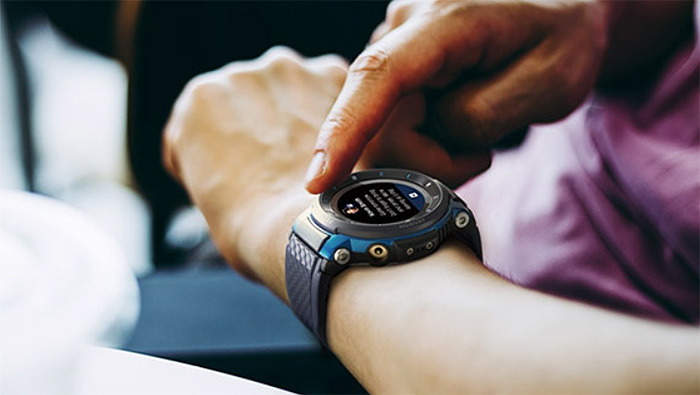


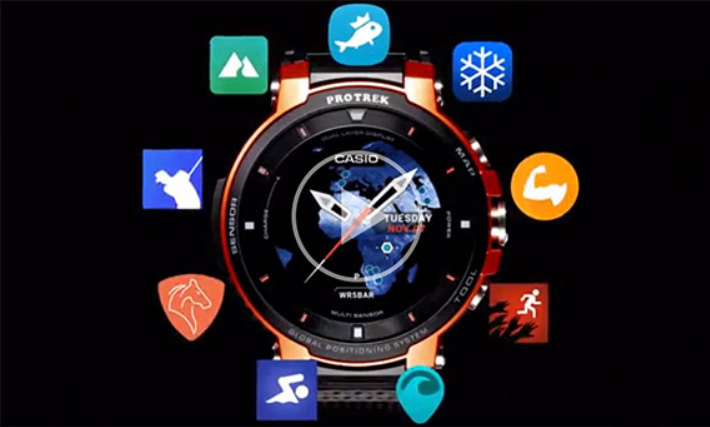







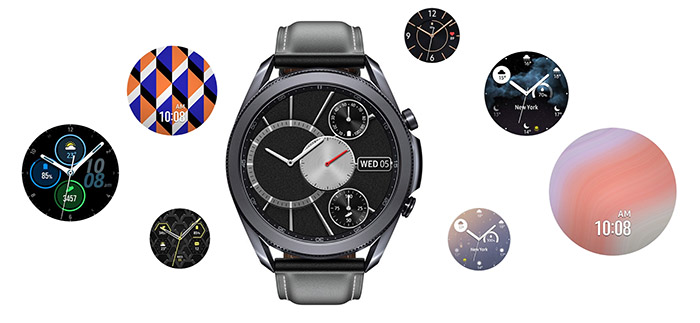
Nice list to check out. I love these smartwatches. Thanks for your reviews and suggestion.
not to forget the WORKERBASE rugged smartwatch for industrial use. It seems to be the first and only smartwatch for professional use: https://workerbase.com/industrial-smartwatch/
The smartwatch industry is not growing as fast as smartphone industry. This is because people are still not convinced about the usefulness of a smartwatch when there is a smartphone to do that for you. Your article is nice and useful to explore more about smartwatches. Nowadays the trend seems to be changing, and people have started to look into these new gadgets.